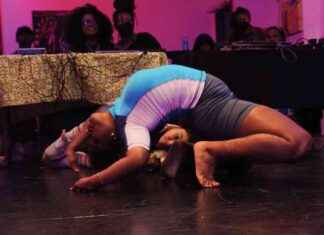There is no doubt that the achievements and advances of the Renaissance were very outstanding. This period spawned great artists and thinkers whose works continue to dazzle us today. Thanks to the expansion of the printing press, the ideas of humanism spread. The intellectual climate fostered debates on concepts such as “republicanism”, “individual freedom” or “reason of State” (Nicolás Machiavelli would be its highest representative), which had a great later influence.
But, in addition to lights, the Renaissance also had shadows. The Europe of the fifteenth and sixteenth centuries, and in particular Italy, was a territory at war. The clashes were constant. The population was the victim of looting, rape and massacres. The sieges of the cities caused terrible famines and epidemics.
Among the elites, power struggles were brutal. Betrayal, corruption (the term “nepotism” comes from this era) and political crimes were frequent. Freedom was for a few. The peasants, soldiers and workers lived exploited. The women, subdued. And minorities, like Jews, segregated and persecuted.
About one percent of the population of 15th century Italy were slaves. Its traffic began to proliferate in this period, linked to the expansion of the capitalist economy and the formation of colonial empires. One of these dealers was Francesco del Giocondo, a prosperous Florentine silk merchant.
The portrait of his wife, Lisa Gherardini, better known as “Mona Lisa” or “La Gioconda”, is a good example of the chiaroscuro that characterized this period: the most famous painting of the Renaissance was financed thanks to a despicable trade, contrary to to the humanist and progressive values ??that we associate today with this period of history.
Italy was the cradle of the Renaissance, but also the center of the war disputes in Europe in the 16th century. The Italian peninsula, divided into various kingdoms and states, was the scene of the wars between the powerful French and Spanish monarchies.
The so-called Italian Wars (1494-1559) began as a dynastic dispute between these two nations over the Duchy of Milan and the Kingdom of Naples, and ended as a fierce struggle for the domination of the different Italian territories. A lengthy conflict in which the rest of the European powers and the city-states of the peninsula were involved.
The Renaissance is synonymous with inventions and technological advances, especially thanks to the dissemination of the work of Leonardo da Vinci. But not all served humanistic ideals. As a result of these advances, the warfare of this period was bloodier and more destructive than in previous centuries. The appearance of firearms, together with the expansion and professionalization of armies, transformed war into a conflict of never-before-seen dimensions. Gunpowder, invented in China, had reached Europe in the 14th century. Its use quickly became widespread on the battlefields.
In the fifteenth century, all the great European armies were armed with artillery and arquebuses, replacing catapults and crossbows. The consequences on the population were terrible. Firearms wreaked havoc across the continent, transforming sieges of cities into nightmarish scenarios. To the hunger and diseases suffered by its inhabitants after months of siege, were added the massacres caused by the attacks with explosives, capable of reaching the very center of the fortified squares.
The scope and increasing frequency of wars forced most rulers to hire professional soldiers. This increase in armies placed a tremendous economic burden on nations. To finance the campaigns, the States exerted a very strong fiscal pressure on their citizens and borrowed to unsustainable limits.
The delays in the payment of the soldadas were frequent, as well as the lack of supplies. When that happened, the local population paid the consequences. The soldiers, starving, ragged and enraged, looted and destroyed, raped and murdered the locals or kidnapped them for ransom. They were also tortured to make them reveal the whereabouts of valuables.
As we said before, the Italian peninsula was divided into a multiplicity of small States. There were kingdoms (Naples, Sicily), duchies (Savoy, Milan, Ferrara…), the Papal States and republics, some of them very powerful, like Florence or Venice. These territories competed with each other for their political and commercial pre-eminence. Also for the aggrandizement and embellishment of their cities, which catapulted art.
The fact that Florence played a central role in it has led to the belief that it was only the republics that drove the development of the Renaissance, later extending to Rome or Milan. Even that republican values ??were the ideological engine of that cultural development.
In the first place, there were also several princely courts that contributed to the artistic flourishing, such as Ferrara, Mantua or Urbino (the birthplace of Raphael Sanzio). His courts protected artists of the stature of Giovanni Bellini and Tiziano (Ferrara), Piero della Francesca (Urbino) or Andrea Mantegna, who was a court painter for the Mantuana court all his life.
Regarding the second point, the Italian republics of the Renaissance were not democratic states in the modern conception of the term, but oligarchic states ruled by an elite lineage, usually in conflict with each other.
The most famous were the Medici of Florence. This family of bankers played a fundamental role in the intellectual and artistic development of the time. The most prominent thinkers and artists worked under his patronage, but they are also an example of the corruption and political intrigues of the period.
On Sunday, April 26, 1478, in the Florence Cathedral, a group of men attacked the brothers Juliano and Lorenzo de Medici. The first died after receiving nineteen stab wounds, and the second, the famous “the Magnificent”, fled wounded, although not seriously. Among the conspirators were two members of the Pazzi family (who gave the conspiracy its name) and one of the Salviati. These two banking clans were rivals of the Medici, with whom they competed for pontifical finances and whom they wanted to overthrow.
Also involved in the plot were Pope Sixtus IV and, as was discovered in 2004 (after the deciphering of a diplomatic message written in code), Federico da Montefeltro, Duke of Urbino. All of them were respectable humanists and patrons, responsible for promoting the decoration of the Sistine Chapel, the Ducal Palace of Urbino, the portrait of the Diptych of the Dukes of Urbino, by Piero della Francesca, the art academy in the garden of San Marco…
This conspiracy is the most famous of the time, but not the only one. Political assassinations followed one another. It is as if the rulers of the Renaissance had put into practice the political philosophy of his contemporary Machiavelli, that “the end justifies the means” (a phrase that condenses the ideas of The Prince, but which, in reality, he never said).
In Florence itself, the Dominican friar Girolamo Savonarola, confronted with the Medici (whom he replaced in power when they were expelled after the French invasion of 1494), was declared a heretic by Pope Alexander VI (whom he also confronted, accusing him of of corruption), tortured and burned at the stake in 1498.
At the same time, the philosopher Pico della Mirandola, a friend of Savonarola, and the poet Angelo Poliziano were poisoned with arsenic, probably by order of Peter II de’ Medici, an enemy of the Dominican.
Four decades later, another Medici, Alexander, 1st Duke of Florence (the republic had become a duchy in 1532) and possible illegitimate son of Pope Clement VII (Julius de’ Medici), was stabbed to death by his cousin Lorenzino de’ Medici, defender of the Republic…
Outside of Florence, Milan was the other major focus of political intrigue at the time. In 1476, Duke Galeazzo Maria Sforza, famous for his musical patronage and for his licentious and tyrannical character (he was accused of poisoning his own mother, Bianca Maria Visconti), was the victim of a conspiracy that probably inspired that of the Pazzi.
On December 26, in the Basilica of Santo Stefano Maggiore, the Duke was stabbed to death by a group of Milanese nobles. With his assassination they intended to reinstate the government of the Ambrosian Republic, established thirty years earlier and abolished by Francesco Sforza, Galeazzo’s father. The conspirators were arrested and executed.
But not everything ended there. The heir, Gian Galeazzo Sforza, was only seven years old, so a dynastic struggle broke out between the relatives of the murdered duke to seize power. The deceased’s brother, Ludovico Sforza, emerged victorious from it.
Nicknamed “el Moro” because of the color of his skin, his taste for Arab clothing and his personal guard, made up of African slaves, Ludovico managed to get rid of his sister-in-law and regent, Bona de Saboya, forced into exile, and the powerful minister Cicco Simonetta, who, falsely accused of treason, was beheaded.
Ludovico was in charge of the guardianship of his nephew until he died, in a very suspicious way (it is believed that he was poisoned), when he was 25 years old. The Moor, with the path clear, became a key figure in Renaissance art, for being the main patron of Leonardo da Vinci. To him we owe two of the most famous Tuscan works: The Virgin of the Rocks and The Last Supper.
This text is part of an article published in number 647 of the Historia y Vida magazine. Do you have something to contribute? Write to us at redaccionhyv@historiayvida.com.








